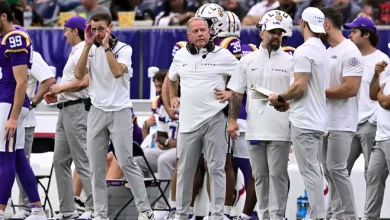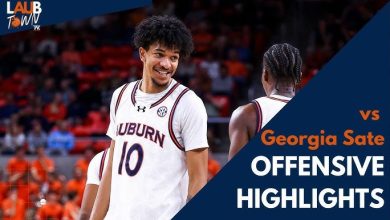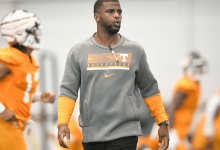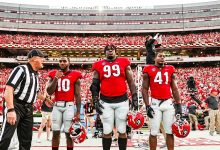Oklahoma GM Jim Nagy explains why OU avoids overspending on 5-star recruits, focusing on balanced team-building and long-term success.
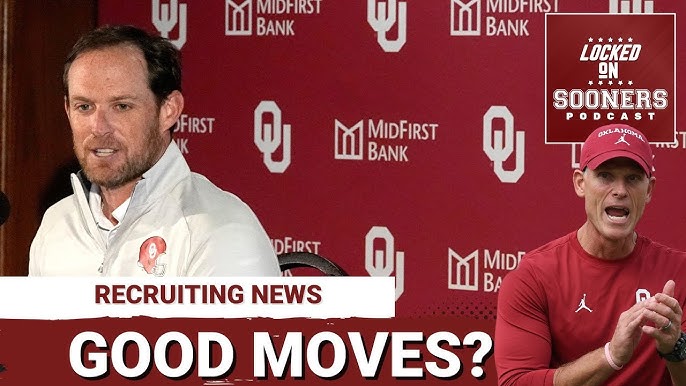
In the hyper-competitive world of college football recruiting, landing 5-star prospects is often seen as the ultimate goal for programs aiming to compete at the highest level. However, the University of Oklahoma (OU), one of college football’s storied programs, has adopted a more measured approach under General Manager Jim Nagy. Rather than chasing after every 5-star recruit at any cost, Nagy and his staff prioritize balanced roster construction, fiscal responsibility, and long-term team success.
This article dives into Jim Nagy’s recruiting philosophy, explores why OU avoids overspending on marquee recruits, and examines how this strategy positions the Sooners for sustained competitiveness in an ever-evolving college football landscape.
The Recruiting Arms Race: Why 5-Star Prospects Are Coveted
In recent years, recruiting has intensified into a fierce arms race. Programs with deep pockets and national prestige often allocate significant resources to secure commitments from elite 5-star recruits—the athletes rated as the best in the country by scouting services.
These players often bring elite athleticism, immediate impact potential, and high expectations to a program. For many coaches and fans, signing a 5-star prospect signals that a program is “in the hunt” for championships.
But this comes at a cost. Offering massive scholarship packages, financial incentives via Name, Image, and Likeness (NIL) deals, and other perks can strain a program’s budget and potentially disrupt team chemistry.
Jim Nagy’s Philosophy: Balance Over Boom
Jim Nagy, serving as OU’s General Manager, oversees recruitment, roster management, and player development. In interviews and press conferences, Nagy has articulated a clear stance: OU values balance and sustainability over “winning the bidding war” for every 5-star athlete.
Why Overspending Is Risky
Nagy points out several risks associated with overspending on top recruits:
-
Cap Strain and Roster Imbalance: Scholarships and NIL investments directed heavily toward a handful of players can leave little room to develop depth across the roster.
-
Team Chemistry Disruption: Uneven treatment or perceived “favored” status can create divisions within the team.
-
Long-Term Instability: If highly paid recruits don’t pan out or leave early, the program faces gaps that are difficult to fill mid-cycle.
Instead, OU emphasizes strategic investment—prioritizing recruits who fit the team’s culture, work ethic, and positional needs, whether 5-star or not.
Strategic Team-Building: The OU Approach
Evaluating Fit and Potential
Rather than focusing solely on star ratings, Nagy’s team evaluates prospects holistically:
-
Character and Work Ethic: Players who demonstrate commitment to team success and resilience.
-
Positional Needs: Targeting areas where the roster requires depth or development.
-
Coachability: Athletes open to growth and learning.
This approach aligns with the understanding that not all 5-star recruits translate into college success, and many 3- or 4-star players often become key contributors.
Developing Depth and Versatility
Nagy emphasizes the importance of building depth across all positions. College football is physically demanding, and injuries are common. Programs that rely heavily on a few star players can struggle when those athletes are sidelined.
By investing evenly across the roster, OU ensures it has capable backups ready to step in and maintain a high level of play, reducing the risk of season-ending performance drops.
NIL and Financial Responsibility
With the advent of NIL, recruiting dynamics have shifted dramatically. High-profile athletes often command substantial deals that extend beyond traditional scholarship packages.
Nagy stresses that OU is committed to responsibly managing NIL offers to avoid inflated spending that jeopardizes roster balance or the program’s financial health.
Case Studies: OU’s Recent Recruiting Classes
Analyzing recent recruiting cycles at OU illustrates Nagy’s strategy in action.
2024 Recruiting Class
-
Balanced Mix of Ratings: The class featured a mix of high-rated recruits, mid-level prospects, and underrated gems.
-
Positional Priorities: Focus on bolstering the offensive line and defensive secondary—positions crucial for long-term competitiveness.
-
Character Focus: Many signees praised for leadership qualities and strong academic performance.
Success Stories from 3- and 4-Star Players
Numerous OU players with lower star ratings have developed into starters and impact players. This reinforces Nagy’s belief that investing in development and culture matters as much as raw talent.
Benefits of Nagy’s Approach
Sustained Competitiveness
By avoiding unsustainable spending, OU can maintain a deep, well-rounded roster year after year. This provides resilience during injuries or unexpected departures.
Strong Team Culture
Balanced recruiting helps promote a team-first mentality, where every player feels valued and motivated. This contributes to on-field cohesion and off-field camaraderie.
Financial Stability
Fiscal prudence ensures the program can invest in facilities, staff, and resources that benefit all athletes, enhancing overall program quality.
Challenges and Criticisms
Despite its merits, Nagy’s strategy has faced some pushback.
Competing for Elite Talent
Some critics argue that failing to aggressively pursue 5-star recruits risks losing out to programs that do, potentially limiting elite-level talent.
Fan Expectations
Fans often equate star ratings with success and want marquee signings to signal ambition, making measured approaches harder to sell publicly.
NIL Market Competition
The NIL marketplace is competitive, and programs with more aggressive spending may attract high-profile athletes, putting pressure on OU’s conservative stance.
The Bigger Picture: College Football’s Changing Landscape
The recruitment landscape is shifting rapidly due to NIL, transfer portals, and changing NCAA policies. Nagy’s approach reflects a broader understanding that success will come not just from signing big names but from building adaptable, resilient programs.
What This Means for OU’s Future
As OU navigates upcoming seasons, Nagy’s balanced recruitment and roster management philosophy will be critical.
-
Developing Homegrown Talent: Continued investment in coaching and player development will be essential.
-
Flexibility in the Transfer Portal: Strategically adding transfers to fill gaps while maintaining roster balance.
-
Sustaining Program Prestige: Success on the field through smart recruiting and development keeps OU competitive nationally.
Jim Nagy’s recruiting philosophy at Oklahoma underscores a vital truth: building a championship team requires more than chasing stars. By prioritizing balance, culture, and long-term success, OU positions itself to be a consistent contender.
Overspending for 5-star recruits might bring short-term excitement, but Nagy’s approach fosters a sustainable model that can withstand the unpredictable nature of college football. It’s a strategy rooted in patience, prudence, and a deep understanding of what truly builds winning programs.
For Oklahoma Sooners fans, this means trusting the process and believing that measured, thoughtful recruiting will keep their beloved program competitive for years to come.





